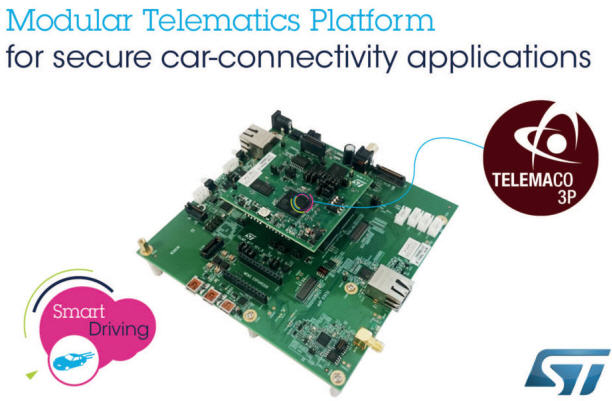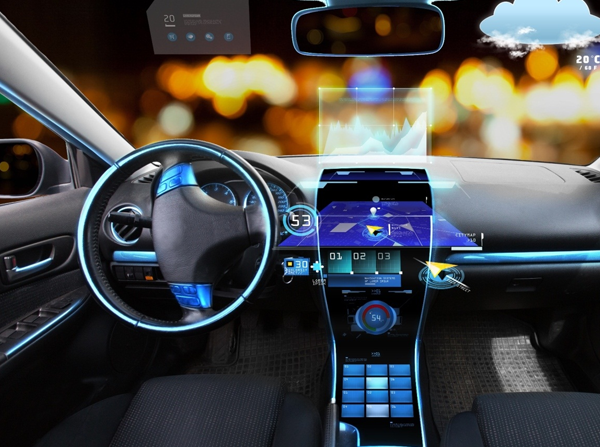STMicroelectronics' (ST) Security Module (HSM) Automotive Microprocessor Solution
Date: 2019 / 11 / 30 Source: 网络整合 Browse: 706
There are millions of Internet cars driving on the road, and industry analysts predict that by 2020, the total number of Internet cars will exceed 250 million [1]. Aftermarket equipment such as in-vehicle information service controllers, Wi-Fi hotspot terminals, automotive Internet services supported by Bluetooth® devices, and on-board diagnostics (OBD) interface controllers can improve vehicle safety, driver efficiency, and social entertainment functions . On the other hand, this networking feature also provides a real attack surface for hackers.
Auto companies are rapidly looking for security measures to support the development of Internet services in high-value markets such as content streaming, location-based assistance, smart emergency rescue, and in-vehicle electronic control unit (ECU) software updates, while preventing hackers from exploiting These networking functions serve their purpose. Safety experts recommend that car companies adopt various security technologies, such as establishing a trust mechanism on connected devices, protecting the security of all connection points, and constructing multiple security lines of defense from the circuit to the software.
STMicroelectronics is helping the automotive industry address these challenges and challenges by integrating its security chip technology expertise, which has been tested in global financial and government applications, and semiconductor products that meet important automotive industry safety and quality standards. The new Telemaco 3P vehicle information network processor (STA1385 and its derivatives) is the market's first automotive microprocessor to integrate a powerful, isolated dedicated hardware security module (HSM), like an independent security guard, able to guard data Exchange, perform information encryption verification function. The HSM module is responsible for verifying the authenticity of the information received by the car and the authenticity of external devices trying to connect to the car, preventing network eavesdropping.
With the on-chip integrated HSM module, Telemaco 3P processors are ahead of the general-purpose application processors commonly found on Internet automotive systems, because these general-purpose processors lack the security features implemented by dedicated hardware. ST's new products have extremely high reliability and robustness, with a maximum rated operating temperature of 105 ° C, suitable for installation locations where the ambient temperature may be extremely high. For example, smart antennas can be installed directly on or under the roof .
Antonio Radaelli, director of infotainment division of STMicroelectronics Automotive and Discrete Devices Products Division, said: "Internet cars need powerful cyber attack defense capabilities. Our accumulated knowledge on automotive industry standards and requirements has laid a solid foundation for the development of safe and interesting Internet cars. "
The new automotive processor is part of ST's comprehensive product strategy, which provides products with built-in security features, including a stand-alone security unit (ST33) and an embedded flash microcontroller (SPC5).
STMicroelectronics will provide STA1385 engineering samples to major partners from now on, and mass production is planned to begin in mid-2018.
Technical Description:
In addition to implementing advanced security technologies such as symmetric and asymmetric cryptographic algorithms, the HSM module also runs software security algorithms, which can reduce the load on the high-performance main CPU and enable it to handle more complex applications more freely.
Integrated CAN FD (Variable Data Rate Controller Area Network), Gigabit Ethernet, and 100Mbit / s secure digital I / O (SDIO) interfaces on-chip, allowing Telemaco 3P series products to be used as vehicle communication gateways for connecting information Entertainment systems or electronic control units (ECUs) connected to the CAN bus, such as door controllers, engine or transmission management systems, or body electronics control modules. The new processor also integrates basic power management circuitry, which helps simplify design, reduce application size, and save bill of materials.
STA1385 complies with ISO 26261 automotive functional safety standards, meets the requirements of integrity level standard B (ASIL-B), and complies with CAN bus communication protection specifications of AUTOSAR. The Telemaco3P processor supports a POSIX compatible operating system, giving users the flexibility to choose the best operating system according to the requirements of various target use cases.











